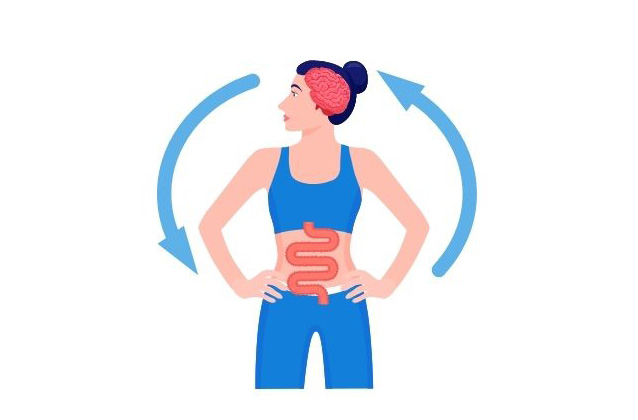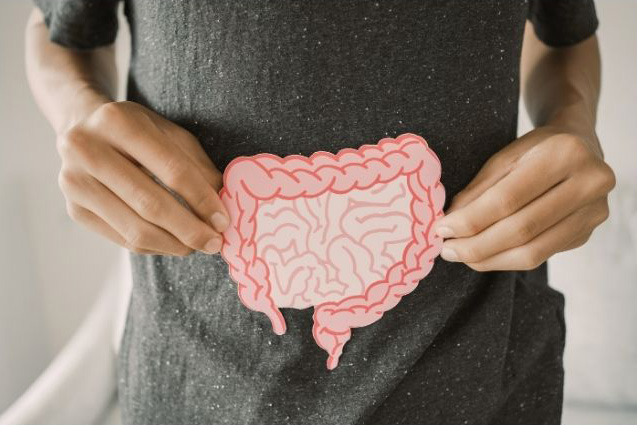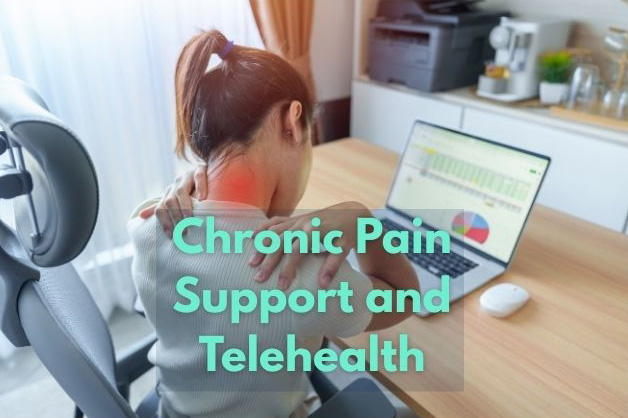Living with chronic pain isn’t just a physical battle; it’s an emotional rollercoaster that touches every corner of your life. You might find yourself canceling plans, struggling through workdays, or feeling isolated because explaining that constant ache to others feels impossible. But what if I told you that the key to easing some of that burden could be hiding in your gut? Emerging research is shining a light on the fascinating—and sometimes surprising—connection between gut health and chronic pain conditions. And in today’s world, where getting to a doctor’s office isn’t always easy, chronic pain support and telehealth are emerging as vital tools to help manage it all from the comfort of home. Let’s take a look at the science, the real-life implications, and how virtual care is making a difference, all while keeping things straightforward and relatable.
Key Insights on the Connections

Research suggests a strong link between gut microbiome imbalances and chronic pain conditions like fibromyalgia, IBS, and osteoarthritis, where dysbiosis can heighten inflammation and pain signals through the gut-brain axis. It seems likely that nurturing gut health with probiotics, diet changes, or even fecal transplants could ease some chronic pain symptoms, though results vary by individual. Telehealth offers accessible chronic pain support by connecting patients to health providers without travel, making it easier to manage flare-ups and integrate holistic approaches like gut-focused nutrition advice. Evidence leans toward telehealth improving patient outcomes in pain management, but it shines brightest when combined with in-person care for complex cases, acknowledging that not everyone has equal tech access.
Core Gut-Pain Dynamics
Imagine waking up every day feeling like your body’s on high alert—aches that won’t quit, no matter how many painkillers you try. For millions dealing with chronic pain, this is reality. But here’s a twist you might not expect: your gut could be playing a bigger role than you think. Scientists are uncovering how the trillions of bacteria in our digestive system, known as the gut microbiome, can influence pain levels throughout the body.

Fibromyalgia and Gut Imbalances
Take fibromyalgia, for instance. Studies show that people with this condition often have altered gut bacteria, which might trigger widespread pain by messing with inflammation and nerve signals. It’s not just about tummy troubles; these microbial shifts can send ripple effects to your brain via the gut-brain axis, ramping up sensitivity to pain. Fibromyalgia is a condition affecting 2-4% of people with widespread muscle pain, fatigue, and sleep issues. Scientists have found that folks with fibromyalgia often have distinct changes in their gut bacteria, like lower diversity or shifts in species that produce anti-inflammatory compounds. These alterations can crank up neuroinflammation, making the central nervous system more sensitive to pain signals. It’s like your body’s alarm system is stuck on high, turning minor sensations into major discomfort.
IBS, Osteoarthritis, and Related Conditions
Similarly, in conditions like irritable bowel syndrome (IBS) or osteoarthritis, an imbalanced gut—maybe from diet, stress, or antibiotics—can lead to higher levels of inflammatory compounds that make joints ache or bellies cramp relentlessly. Similarly, in irritable bowel syndrome (IBS), which plagues millions with abdominal cramps and bloating, dysbiosis disrupts the gut barrier, letting inflammatory particles leak into the bloodstream and fuel visceral pain. Studies show reduced levels of beneficial bacteria like Bacteroides or Bifidobacteria in IBS patients, correlating with heightened pain episodes. But it’s not limited to gut-specific issues. Neuropathic pain—from nerve damage in diabetes or chemotherapy—also ties back here. Research indicates that gut microbes modulate immune cells like T-cells, which can either dampen or amplify nerve pain. In animal models, altering the microbiome with antibiotics reduced pain hypersensitivity in nerve injury scenarios. Even osteoarthritis (OA), that nagging joint pain from wear and tear, shows connections: higher Streptococcus species in the gut are linked to worse knee pain and inflammation, possibly through systemic effects on joints. And don’t forget migraines—gut dysbiosis might trigger them by boosting pro-inflammatory cytokines like IL-6 or TNF-α, which ramp up headache severity.
Mechanisms Behind the Link
Short-chain fatty acids (SCFAs), those helpful byproducts from good gut bugs, act like natural anti-inflammatories. When they’re low due to dysbiosis, pain can spike. Even headaches and migraines might tie back here, with gut issues potentially sparking neuroinflammation. How does this all happen mechanistically? One big player is short-chain fatty acids (SCFAs) like butyrate and propionate, produced when gut bacteria ferment fiber. These SCFAs act as anti-inflammatories, regulating immune cells and even influencing brain cells like microglia and astrocytes to prevent overactive pain pathways. When SCFAs are low, inflammation rises, contributing to central sensitization—where the brain amplifies pain signals. Gut bugs also produce neurotransmitters like GABA (calming) or glutamate (excitatory), directly tweaking pain modulation. Plus, dysbiosis can mess with tryptophan metabolism, affecting serotonin levels that influence both mood and pain.
Debates and Potential Interventions
There’s controversy too—while many studies point to these links, causation isn’t always clear. Is dysbiosis causing pain, or is pain (and its stresses or meds) disrupting the gut? Opioids, common for chronic pain, can worsen dysbiosis by damaging the gut barrier and promoting inflammation, creating a vicious cycle. Still, interventions show promise. Probiotics with strains like Lactobacillus reuteri or Bifidobacterium infantis have reduced visceral pain in IBS trials by restoring balance and cutting inflammation. A low-FODMAP diet, which limits fermentable carbs, alters gut microbes to ease IBS symptoms and pain. Even fecal microbiota transplantation (FMT) has helped normalize microbiomes and lessen pain in some cases, though it’s not mainstream yet. The good news? Simple steps like adding probiotic-rich foods (think yogurt or kimchi) or trying a low-FODMAP diet could help restore balance and dial down discomfort.
Telehealth’s Role in Chronic Pain Management

Living with chronic pain often means endless doctor visits, which can feel exhausting on top of everything else. That’s where chronic pain support and telehealth come in, providing a transformative solution for those who can’t easily get to a clinic. Through virtual appointments, you can chat with medical professionals, get prescriptions adjusted, or even join therapy sessions without leaving your couch. Now, how does telehealth fit into this? For anyone who’s ever dragged themselves to a clinic mid-flare-up, the appeal is obvious. Telehealth—virtual visits via video or phone—has exploded, especially post-COVID, as a way to deliver chronic pain support without the hassle.
Benefits and Accessibility
Telehealth shines in providing quick access to care—imagine logging in for a check-in during a bad flare-up instead of waiting weeks for an in-person slot. It’s especially helpful for integrating gut health into pain management; a telehealth provider might review your diet via video and suggest microbiome testing or supplements based on your symptoms. It reduces travel burdens, which is huge for rural folks or those with mobility issues, and cuts down on missed appointments. Patients report feeling more in control, with quicker access to adjustments in treatment plans—like tweaking meds or discussing gut-friendly diets.
Patient Empowerment and Outcomes
Studies highlight how these remote services boost patient satisfaction, reduce missed appointments, and even lower the need for emergency visits by empowering you with self-management tools like apps for tracking pain or breathing exercises. Plus, for those on opioids, telehealth allows safer monitoring to avoid dependency issues, all while giving providers a peek into your daily life for more personalized advice. From a practical standpoint, telehealth enables ongoing monitoring: track pain levels, review gut symptoms, or even guide remote physical therapy. For opioid users, it’s safer—providers can check adherence without in-person urine drug testing every time, reducing risks while maintaining care. Psychological support, crucial for pain’s mental toll, thrives here too; apps and virtual sessions teach coping strategies like mindfulness, which can indirectly benefit gut health by lowering stress. Studies show high satisfaction rates, with nurse-led phone services effectively managing post-op or cancer-related pain, and telerehab matching in-person outcomes for joints.
Challenges and Balanced Integration
Of course, it’s not perfect—some miss the hands-on exams—but blending it with occasional office visits creates a balanced approach that feels supportive and real. But let’s be real—telehealth isn’t a cure-all. Challenges include tech barriers: not everyone has reliable internet or knows how to use video calls, especially older adults or low-income groups. Physical exams are trickier remotely—no palpating sore spots—so it’s best for follow-ups rather than initial diagnoses. Privacy can be an issue in shared homes, and some patients miss the face-to-face empathy. Providers note that while it gives glimpses into home life (helpful for holistic views, like spotting diet habits affecting gut health), it can limit comprehensive assessments for complex cases.
Evidence Summary and Practical Takeaways

Connecting the dots between gut health and chronic pain opens up new ways to feel better, beyond just meds. And with telehealth in the mix, getting that support doesn’t have to add more stress to your plate. If you’re struggling, talk to a provider about exploring your gut microbiome—it could be the missing piece in your pain puzzle. In the end, addressing chronic pain through gut health isn’t about quick fixes—it’s a nuanced journey that respects individual differences and potential controversies, like varying responses to probiotics. Telehealth bridges the gap, making medical care feel approachable and empathetic. If this resonates, consider chatting with a provider via a virtual visit; it could be the start of feeling more like yourself again.
Comparative Tables
To make sense of the evidence, here’s a table comparing key gut-pain connections and telehealth benefits:
| Aspect | Gut Health Connection to Chronic Pain | Telehealth Role in Management |
| Mechanisms | Dysbiosis leads to inflammation via SCFAs, cytokines; gut-brain axis amplifies signals. | Virtual monitoring tracks symptoms, adjusts treatments remotely. |
| Specific Conditions | Fibromyalgia: Altered microbes boost neuroinflammation. IBS: Barrier leaks cause visceral pain. OA: Bacterial shifts worsen joint ache. | Convenient for follow-ups in IBS or OA; reduces travel for migraine check-ins. |
| Interventions | Probiotics, low-FODMAP diet, FMT reduce pain by restoring balance. | Guides nutrition advice, prescribes supplements via video; supports behavioral therapy. |
| Challenges/Controversies | Causation vs. correlation debated; opioids exacerbate dysbiosis. | Tech access inequities; limited physical exams. |
| Outcomes | Improved gut diversity correlates with less pain severity. | Higher satisfaction, fewer ER visits; better opioid safety. |
Another table on telehealth modalities for pain:
| Modality | Benefits | Drawbacks |
| Video Visits | Visual cues for assessment; build rapport; integrate gut health discussions. | Requires tech; privacy concerns in homes. |
| Phone Calls | Accessible for low-tech users; quick for refills or check-ins. | No visuals; harder to gauge non-verbals. |
| Apps/RPM | Track pain/gut symptoms daily; alerts providers to issues. | Learning curve; data privacy risks. |
If you’re dealing with chronic pain or curious about gut health, book an appointment with us today.
Learn more about the benefits of telehealth by reading our related articles:


